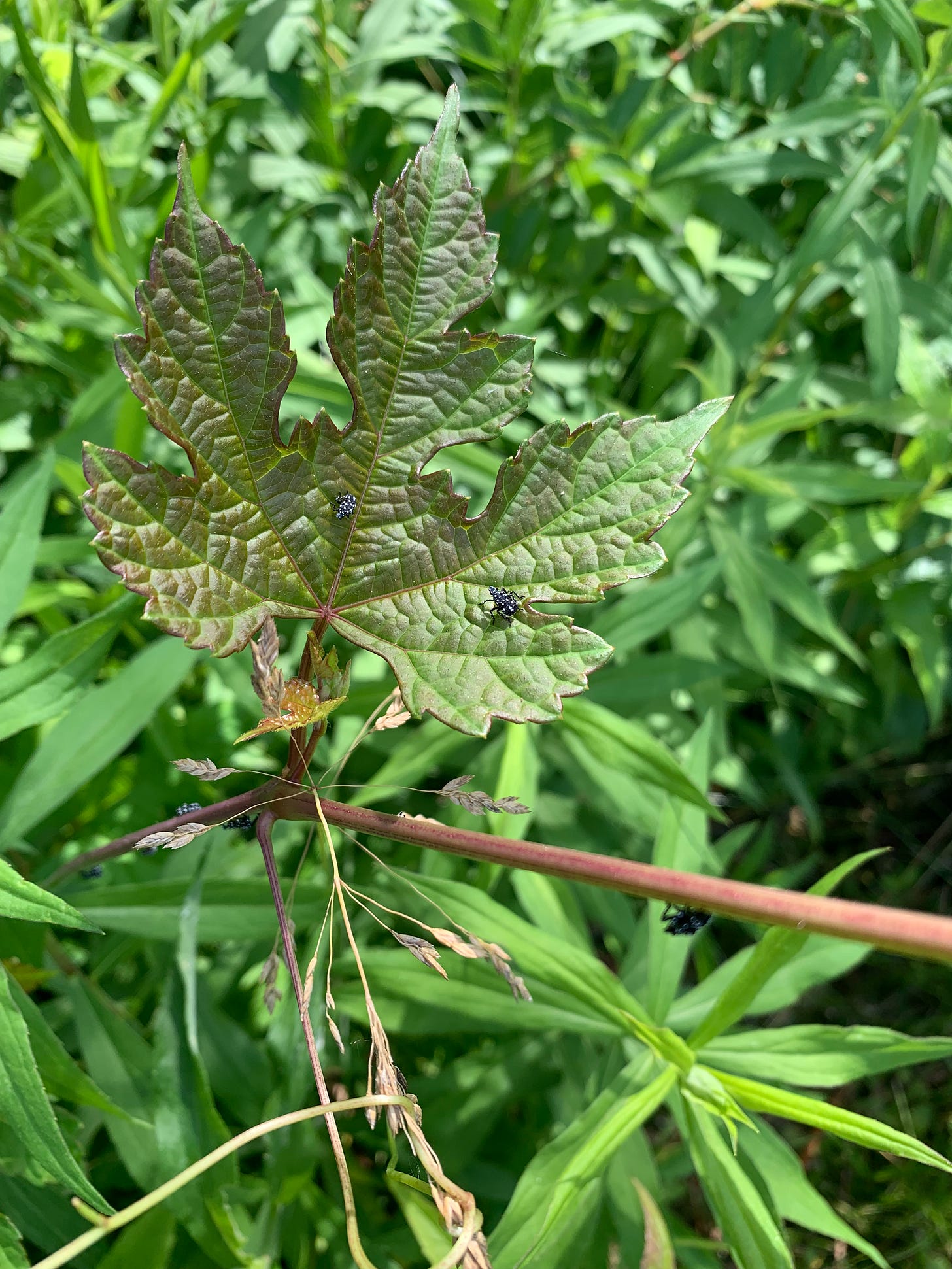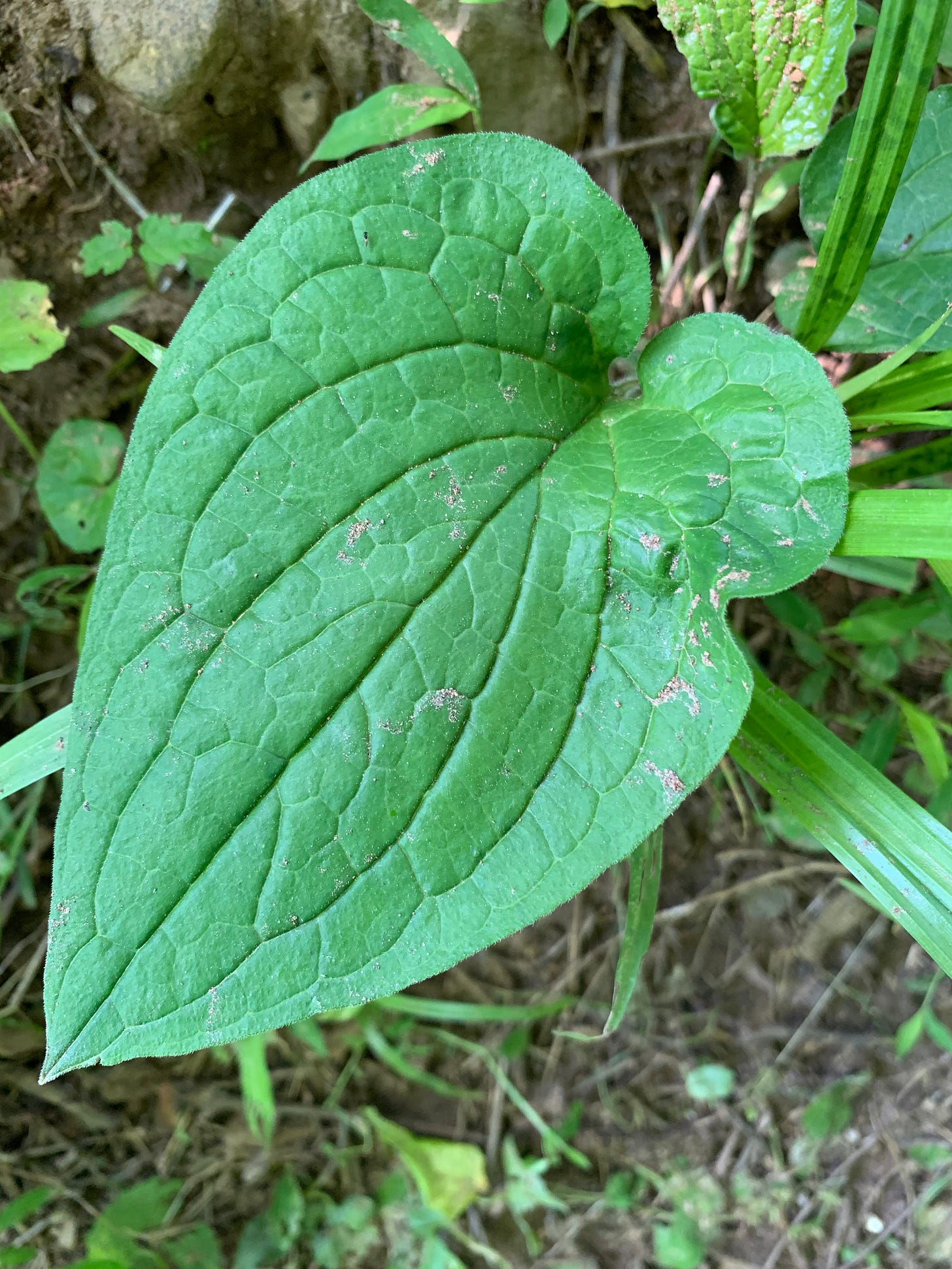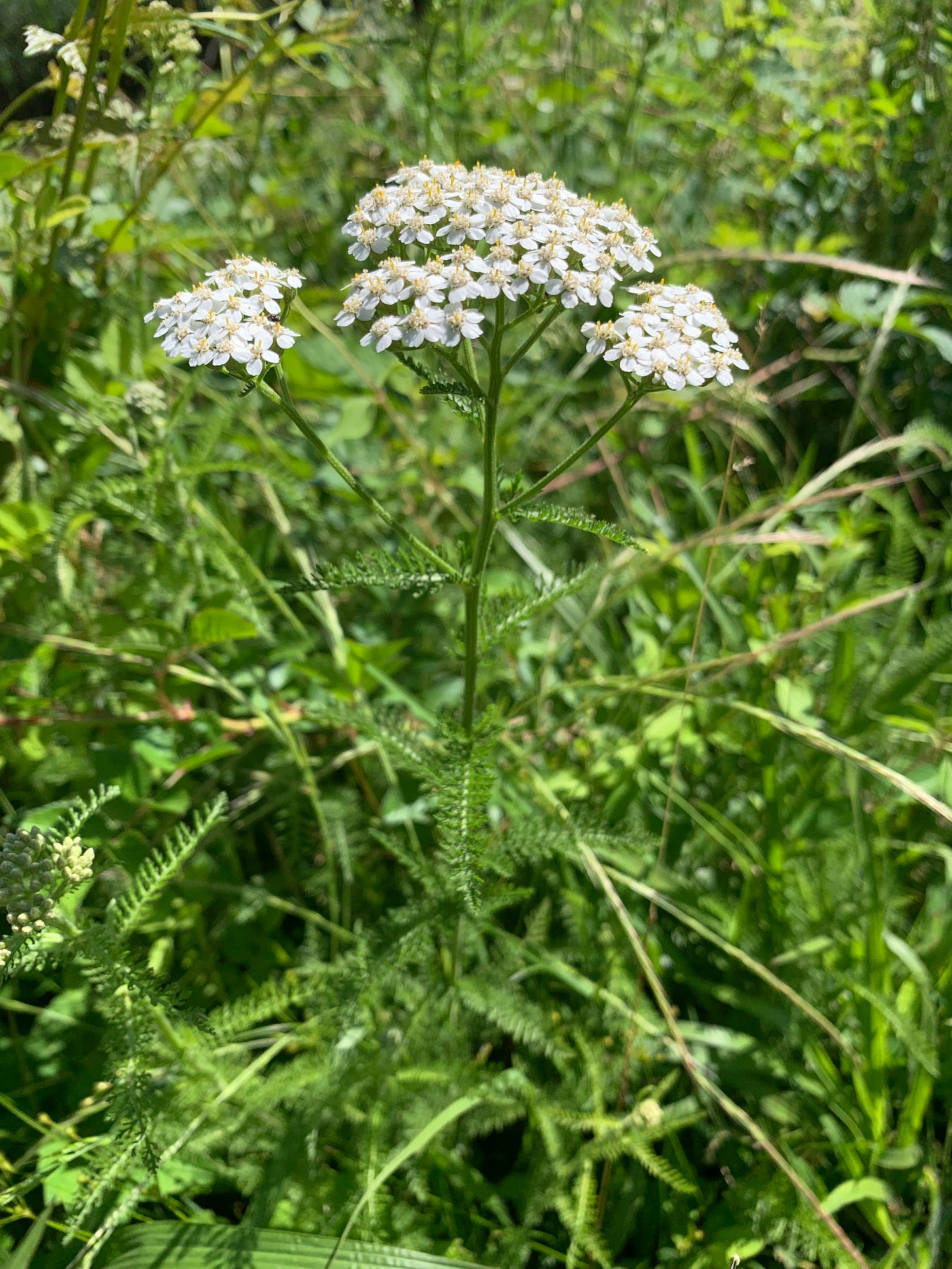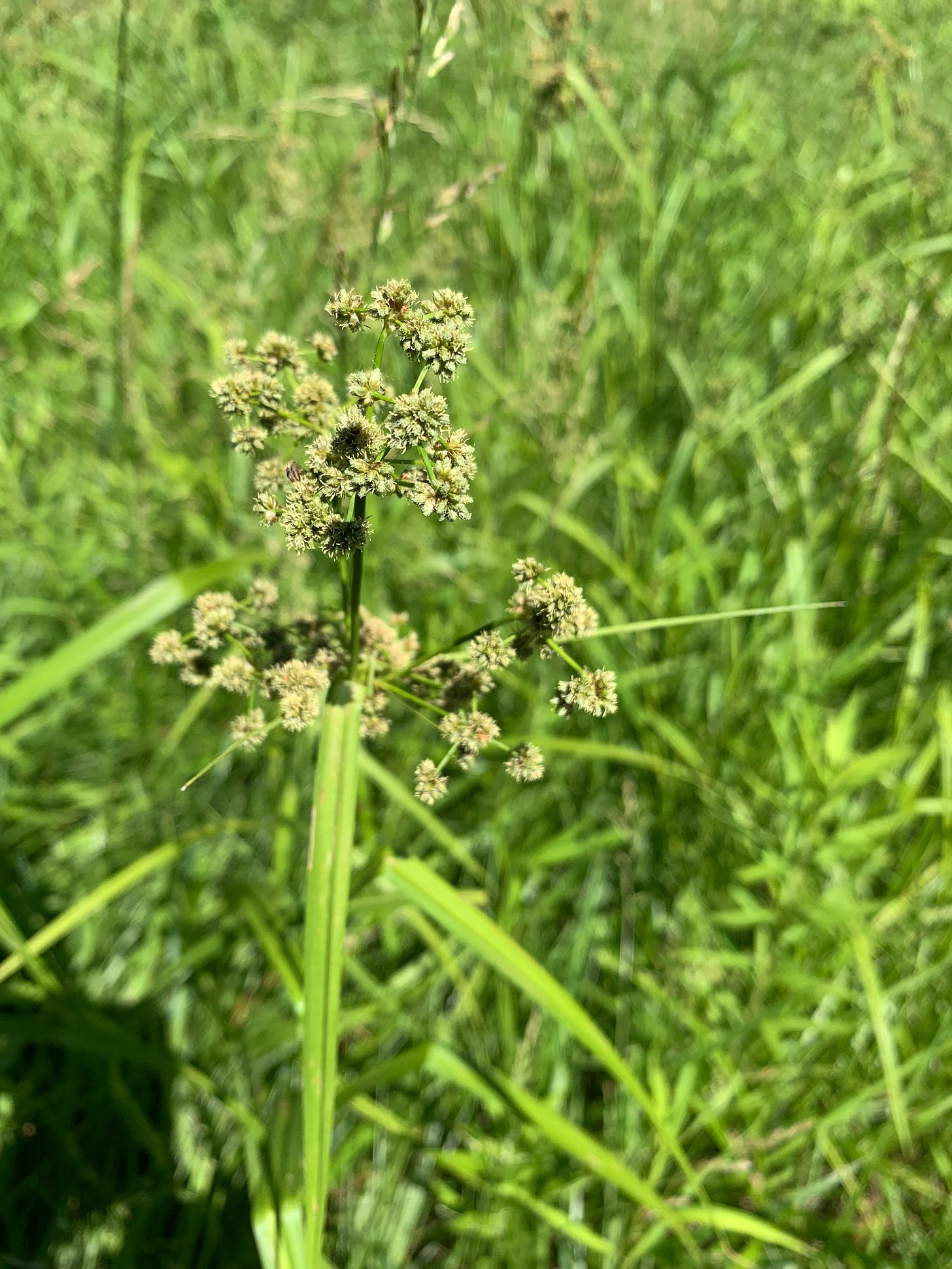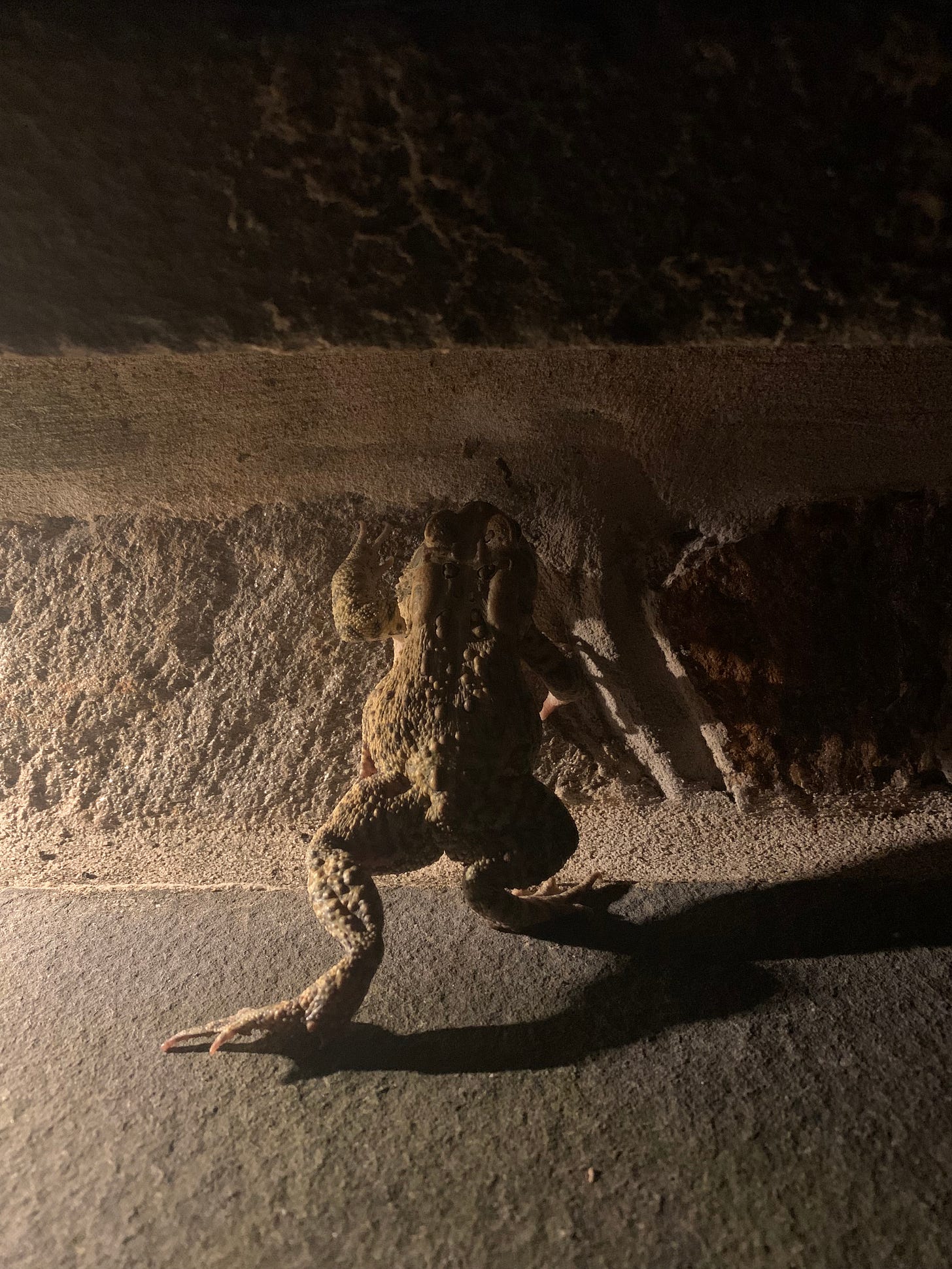Join Nature’s War of Attrition
Puddock Hill Journal #10: Battling Invasives While Helping Natives
The plants in every ecosystem are constantly at war, and it’s a war of attrition. I find it helpful to consider this simple observation when figuring out how best to battle invasive species and promote natives.
Nothing in nature is static. Until about 800 million years ago, for example, Earth contained less than one percent of the oxygen it does today. As photosynthesis proliferated, this balance changed, gradually establishing conditions that allowed for more complex ecosystems that eventually (600 million years later!) produced the evolution of mammals.
In much shorter timeframes, conditions for life in regions both large and small have changed as a result of tectonic activity, climatic variability, fire, the movement of water, and the like. Around the time mammals began to show up, Nevada was at the bottom of the ocean. Thanks to forces similar to those that dried up Nevada, fossilized fish can now be found atop the Himalayan mountains. The Appalachians of North America and the Scottish Highlands of Europe and the Little Atlas Mountains of Morocco were once all part of the same Central Pangean Mountain chain.
The problem we face today is not change itself, but the rate of change and what it means for our existence as humans. For instance, species have migrated great distances in response to past climate change, most of which occurred gradually. In only a handful of cases have events so badly outrun the ability of life to adapt that mass extinctions occurred. The newest, ongoing Holocene mass extinction is only the sixth event of its kind in history.
What drives the speed of much modern ecological change is the population explosion of homo sapiens and our ability to pursue our immediate self interest unchecked. We cut down forests for farmland. We alter the courses of rivers. We burn things at such scale that we change the composition of the atmosphere. We create novel chemicals and unleash them into the environment. On and on.
Two years ago, we humans brought about a milestone that received too little attention, in my opinion. For the first time in geological history (which is to say, 4.5 billion years), the mass of all human-made materials on Earth surpassed all of its biomass, 1.1 billion tons. That is, all the stuff our species has produced and built now exceeds the mass of all living things combined, from amoebas to trees.
Of the many anthropogenic changes affecting our ecosystems, one of the most salient in our neck of the woods is the increasing prevalence of invasive species.
Invasive species have certain characteristics that give them an edge over natives. Many of them are prolific flowerers and seeders, for example. They are often fast growers and sometimes leaf out earlier than the native competition. Many are not too picky about factors such as light, water, and soil quality. And our local bugs and browsers often don’t like to eat them.
The primary insects we find on porcelainberry, for instance, are midges of another invader, the Spotted lanternfly (Lycorma delicatula). I took this picture in the barn field before cutting out the plant:
At Puddock Hill, we have endeavored to address the invasive problem in a somewhat radical way, abjuring chemicals and pursuing only mechanical weapons: hand pruners, trowels, string trimmers, loppers, spades, and chainsaws. I list these in order of heft quite intentionally, as I often note that the unwanted plant that is easily dealt a death blow with a trowel one day, requires a loppers the next and a chainsaw before you know it.
There are more than a dozen invasive plant species at Puddock Hill. In no particular order (and listing common names only), the ones driving me most crazy at the moment are multiflora rose, common reed, Asian bittersweet, Japanese honeysuckle, porcelainberry, Japanese stilt grass, Canada thistle, mile-a-minute weed (aka Asiatic tearthumb), and crown vetch (pictured).
Ain’t it pretty? Kill it!
Complete elimination of all these plants (plus other less noxious invasives that I have chosen not to list) would require indiscriminate tactics that would destroy good guys as well as bad. Our purpose being to promote natives as much as to fight invasives, that seems foolish. So we pick and choose our spots, guided by these five principles:
Kill what you can see. This seems patently obvious until you consider that a landscape not under careful observation can appear to be a monochromatic sea of green. But plants call attention to themselves when they flower. Thus, that herbaceous creeper barely distinguishable from everything else in the meadow reveals itself one day to be crown vetch. The sprigs of green growing along the pond edge betray themselves as multiflora rose. The nondescript shrub at the edge of the woods manifests as Japanese honeysuckle. Cut them all to the ground before the flowers fade.
Level the playing field. This time of year, my favorite thing to do is wade into the lush meadow or woodland understory to hit a tall sprig of multiflora rose or porcelainberry with my hand pruners. After carefully tracing the plant back to its origin, I cut it as close to the ground as possible. Does this kill it? Unlikely, but now it’s competing in the deep shade created by the plants that I do want to encourage. If we execute this maneuver enough times, that plant will not thrive.
Kill what you can reach. Don’t let the perfect be the enemy of the good. Knocking back some invasives is better than leaving them all to run rampant. When I take the dog for his morning walk, I am not prepared for all-out battle, but I always bring along my pruners, which allows me to cut back 20-30 invasive plants per day as I proceed along the paths. In a month I will have put the hurt on a thousand invaders.
Disrupt wood forming and seed production. If possible, we want to eliminate or set back our invasive enemies before they transform into monsters. Honeysuckle, multiflora rose, and bittersweet vines especially are much less harmful and more easily beaten back before they grow woody. Similarly, if you didn’t get to a plant before it flowered, at least try to cut it to the ground before it sets seed. The latter is an especially important strategy for plants like Japanese stilt grass and mile-a-minute vine that do not have prominent flowers. (The mile-a-minute does have visible berries, but by the time you see them it’s too late.)
When all else fails, mow it all down (almost). Sometimes, the invasives so outnumber the natives in a given location that the situation indeed requires a scorched-earth strategy. In that case, our best bet can be to break out the mower or string trimmer. Before doing so, however, we look about to see whether we spot any tight collections of good guys or an unusual native plant. If so, we may mow around that area in hopes we can add good seeds to the seed bank.
I suppose the satisfaction of poisoning things with chemicals comes from knowing in theory you have killed them on the first pass. But, in my experience, that rarely proves to be the case in reality. Especially when the growing season is in full force and the plant is vigorous enough, one spritz of herbicide rarely does the trick, and even if it works, there’s a whole seed bank just waiting to fill in the gap. Meanwhile, what unintended consequences have those chemicals unleashed?
By keeping in mind the competition that ever occurs between plants and using it to our advantage, we can embrace the ethic of the backyard steward.
Are we succeeding with our strategy of mechanical intervention over chemicals at Puddock Hill? We don’t know for sure, but we find the early signs encouraging. We can’t boast about complete elimination of any single invasive species, but their prominence diminishes each year. Even before we undertook to thoroughly pursue the philosophy of Douglas Tallamy and Mt. Cuba, we set out to attack invasive vines. As a result, we have now eliminated virtually all Asiatic bittersweet from our trees, and while we still see multiflora rose all over the place, none of it bloomed this spring on the entire property.
Every time we deprive an invasive plant of the energy it needs to thrive, we provide an opportunity for native flora to get established. If you want more natives, and the wildlife they promote, this war of attrition is worth the fight.
Three native cultivars are growing lushly in the large bed we carved from the lawn last summer. Here’s Ruby Slippers dwarf oakleaf hydrangea (Hydrangea quercifolia ‘Ruby Slippers’) just coming into bloom:
This large-leafed herbaceous plant along the big pond path is a native biennial I haven’t notice here before, Beggar’s lice (Hackelia virginiana). It will eventually put out a small white to pale blue flower.
Native Yarrow (Achillea millefolium) always makes an appearance at Puddock Hill. The first one I saw in flower this spring grows along the big pond dam:
Native dark green bullrush (Scirpus atrovirens) shows off its seed heads in the barn field:
A native Green frog (Lithobates clamitans) enjoys its millstone perch, part of the new fountain. “Clamitans” means “loud calling” in Latin, and it sure fits.
Finally, this Eastern American toad (Anaxyrus americanus americanus) went out hunting for bugs in the lights of the house only to get startled into a lame attempt at hiding from the dogs by dodging under the step. He needn’t have bothered; they paid him no mind.



